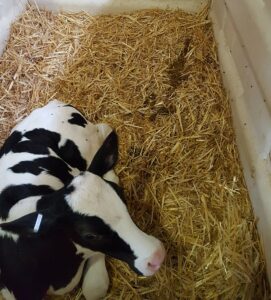We hope everyone stays safe through this wildfire emergency.
Here are several websites providing information (with maps) on specific wildfires and air quality.
Here’s an article on Wildfires, Smoke and Livestock http://cecentralsierra.ucanr.edu/files/220420.pdf The short summary is: minimize animals’ exertion when the air quality is poor and for 4-6 weeks after. There’s additional information about caring for fire-injured livestock.
Australian dairy farmers know about wildfire preparation: https://www.dairyaustralia.com.au/farm/land-water-carbon/extreme-weather/preparing-for-bushfire
Options for evacuating livestock:
Benton County: Fairgrounds (110 SW 53rd Street, Corvallis) — Evacuated Livestock and RV campers are being accepted. Call 541-243-2491. See https://www.bceventcentercorvallis.net/events/2020/benton-county-evacuation-information
Clackamas County: Fairgrounds is no longer an option. See alternatives here https://www.clackamas.us/wildfires/animals (some noted here). See also https://www.facebook.com/crisisresponse/773709353364775/?alias=773709353364775&source=search
Clatsop County: Fairgrounds (92937 Walluski Loop, Astoria) has space. Call 503-717-3824 to check; https://www.facebook.com/clatsopcountyfair/.
Columbia County: Fairgrounds (58892 Saulser Rd, St Helens) has space. Call 541-357-2899 to check.
Crook County: Fairgrounds (1280 S. Main Street, Prineville) has space. Call 541-419-6706 to check.
Douglas County: Fairgrounds (2110 SW Frear Street, Roseburg) has space for smaller livestock; call 541- 440-4394 to check availability. For large livestock (cattle, horses), contact Douglas County Parks Department at 541-440-6040. https://www.flashalert.net/news.html?id=5204
Hood River County: Fairgrounds (3020 Wyeast Road, Hood River) has space. Call 541-354-2865 or 541-490-2985 to check. https://www.facebook.com/pages/category/Fairground/Hood-River-County-Fairgrounds-168670806623958/
Jackson & Josephine Counties: Southern Oregon Emergency Aid (for animal evacuations), call 541-226-1124.
Marion County: Oregon State Fairgrounds (enter at 2400 Silverton Road NE, Salem) has space. St. Paul Rodeo Grounds is almost at capacity; contact Cindy Schonholtz at 719-440-7255 for availability; https://www.facebook.com/StPaulRodeo. West Hills Stables (West Salem); call 503-851-2214 to confirm availability.
Lane County: Events Center (796 W. 13th, Eugene) has space for livestock. Contact at 541-285-8227 before arriving to confirm space availability; https://www.facebook.com/LaneEventsCenter. See also https://www.lanecounty.org/cms/one.aspx?pageId=17035134 under Pet and Large Animal Resources tab.
Linn County: Fairgrounds (3700 Knox Butte Road E, Albany) is full. See other options at https://www.facebook.com/groups/linncountylivestock
Lincoln County: Livestock County Commons (633 NE 3rd Street, Newport). Call 541-265-4961. https://www.co.lincoln.or.us/emergencymanagement/page/seasonal-hazards-wildfire
Polk County: Fairgrounds (520 S Pacific Hwy West, Rickreall) has room. Call ahead at 503-623-3048 to let them know what kind of animal and how many; https://www.facebook.com/Polk-County-Oregon-Fair-199482210083788.
Tillamook County: Fairgrounds (4603 3rd Street, Tillamook) has space. Contact Hayden at 503-812-6189; https://www.tillamookfair.com/p/about/fire-evacuee-information.
Washington County: Westside Commons (801 NE 34th Avenue, Hillsboro), formerly known as the Fair Complex, has space; call 503-314-3433 to check; https://www.co.washington.or.us/News/fire-evacuations.cfm.
For assistance with livestock transportation/housing or to offer assistance, see https://pnwfireanimalrescue.org/
Oregon Department of Agriculture has set up an animal reunification website: https://data.oda.state.or.us/fmi/webd/AH_AnimalTrack?homeurl=https%3A%2F%2Fdata.oda.state.or.us%2Fah.html&fbclid=IwAR1-CFxfYUlW5UP0KbRKbdQg0Em-mnfBTBP3iVBsFWuQ4oz8bf-uhewew1I.








